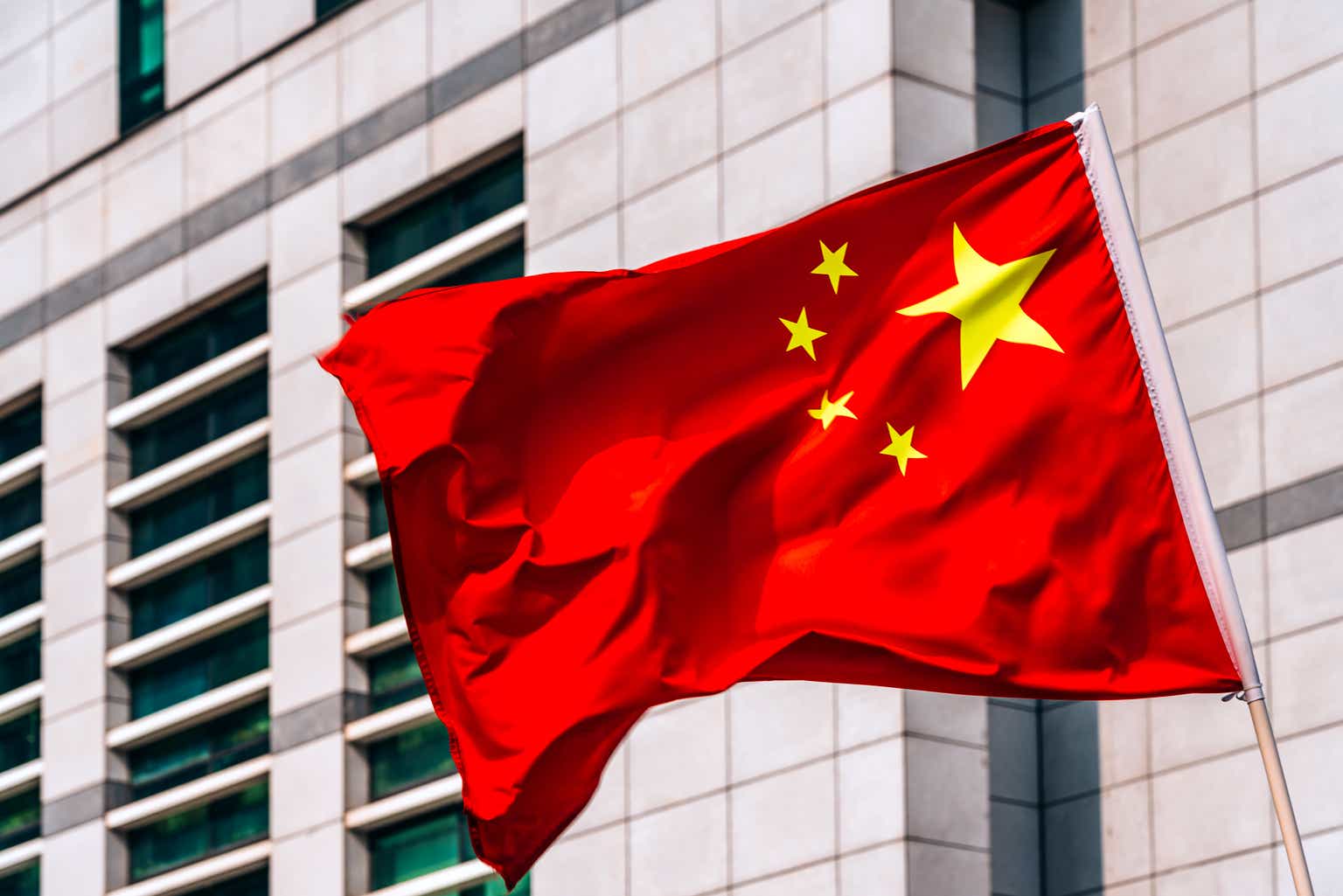On a recent trip to Shanghai and Beijing, I met with investors, companies, and politicians, giving me unique insight into the outlook for Chinese debt. Here are 10 insights that emerging markets debt investors may want to consider.
1. Growth May Rebound in Q4 but Slow in 2024
Offshore investors were more bullish on Chinese economic growth at the start of the year than local investors, but expectations have now converged toward local expectations.
Yes, a cyclical rebound is underway as stimulus measures take effect (see below), and we believe these measures should still benefit the economy on the margin. So, 5% gross domestic product (GDP) growth is likely reachable in 2023. However, a 4% growth rate will likely be the new norm, in our opinion.
Why? The drive to transition growth from exports and property investment toward consumption will likely be slow given the ailing property sector, inadequate social safety nets, and geopolitical challenges. Moreover, the current regime no longer prioritizes gross domestic product (GDP) growth. National security and common prosperity appear to be Chinese leadership’s top long-term objectives.
2. Monetary Policy Still Too Restrictive, but Fiscal Easing Is Likely
Few investors view the recent policy rate cuts and reserve requirement ratio (RRR) cut as meaningful enough, and many think real rates are still too high, especially relative to the United States.
One reason monetary easing has been slow and incremental is that authorities want to avoid a repeat of large stimulus measures leading to imbalances in the economy, which has happened in the past. Another is the need for approval from the top, and to align with the Chinese Communist Party’s economic goals.
But fiscal policy could be more significant. It was contractionary in the first half of 2023, in part because China had to allocate funds to pay back the principal on maturing debt obligations. But in our opinion, that could change during the remainder of the year, with high levels of local government special bond issuance and additional incremental stimulus measures. Many local market participants expect further stimulus measures to be announced at the October politburo meeting.
3. Tax Reform Is Likely Needed
I’m not alone in believing tax reform is needed to solve the structural revenue shortfall of local governments (including declining revenue from land sales).
Some argue that the net effect of declining land sales may be less impactful when considering land-sales-related expenditures. In other words, when land sales decline, there’s a decrease in revenue for local governments from selling land. However, with fewer land sales, there might also be fewer associated costs, such as compensation for residents, development costs, or administrative costs related to the sale.
Nevertheless, local governments need to generate more tax revenues from other channels. Implementing a property tax and reforming the personal income-tax system would help, but may be politically tricky. Some economists believe that authorities will raise taxes once the economy stabilizes to dampen growth expectations.
4. Steel and Iron Ore Demand May Slow Next Year
There are widespread concerns about the outlook for steel and iron ore demand in 2024. Current resilience in those markets comes from project completions and production controls, but with 60% of steel demand deriving from real estate and infrastructure sectors, and low expectations for property investment in 2024, steel and iron ore prices may adjust lower. That said, the development of solar and wind energy and electric vehicles may support copper and aluminum.
5. Property Sector Likely Remains Weak
The property sector remains weak, and the recovery will likely be soft and prolonged. Policy easing has been slow because each move requires authorization from the top. Moreover, measures we have seen thus far have been aimed at ensuring project completions and boosting demand, and may not be successful as long as the core issue of lower income and wealth persist.
For example, policymakers introduced measures that classify homeowners based on the number of houses they own rather than the number of mortgages they have—so homebuyers who own no houses but have mortgage records can be considered first-time homeowners.
This allows more homebuyers to benefit from lower down payment ratios and lower mortgage rates, and encourages homeowners to upgrade or buy better homes. Despite the incentive, the policy doesn’t change the fact that most homeowners will have to sell their houses before they can afford to buy new ones. As a result, there is an increase in listings of homes on the secondary market.
Even developers that are state-owned enterprises (SOEs) are wary of removing discounts in lower-tier cities because of the lack of demand. There are even concerns that the policy easing we have seen not only doesn’t generate additional demand in lower-tier cities, but further saps it as it drives demand toward tier 1 and 2 cities.
My colleagues Anezina Mytilinaiou and Clifford Lau discuss the Chinese property market in great depth in their recent blog post series.
6. Debt Refinancing to Developing Countries Likely Continues
China is catching up to the Western-dominated International Monetary Fund (IMF) and the World Bank as one of the largest official lenders to the developing world. China is now the largest official bilateral creditor for most low-income countries. This is likely to continue.
Chinese authorities likely believe that productive debt should be maintained as it contributes to GDP growth, helping reduce debt-to-GDP in the long run. The IMF’s debt sustainability analysis could also be more transparent. There continue to be differences in views about how multilateral development banks are treated in debt negotiations. And there are doubts about whether a new common framework can be agreed upon, as China prefers to view each case individually.
Indeed, China may be increasingly lenient in refinancing low-income countries’ debt as it seeks to ally itself with these countries amid deteriorating relationships with developed markets.
7. Lack of Coordination Concerns May Linger
The need for authorization from the top has been cited as a predominant reason for China’s restrained policy responses. This is likely to continue.
Several leading officials have been removed from their posts in recent months. Job security and income expectations are low after concurrent regulatory crackdowns on multiple sectors, including technology, finance, education, and healthcare.
The motives for these moves may align with the government’s objectives, including preventing corruption and reducing inequality. However, there seems to be little coordination, and some have compared the moves to how authorities handled China’s zero-COVID policy.
With no term limits, it is likely that Party goals and legacy objectives will take priority over economic growth.
8. Capital Controls Could Remain Tight
Some investors view sudden capital flight as a more significant risk to China’s financial system than growing local government debt.
If Chinese interest rates remain low while U.S. rates are higher, investors have an incentive to move capital to the United States for better returns. This, in turn, can put downward pressure on the RMB (depreciation). China does not benefit much from a weaker currency, as its exports are already price competitive given China’s low inflation versus its trade partners. At the same time, capital outflows may tighten domestic financial conditions.
As a result, capital controls designed to restrict the flow of capital in and out of the country could remain tight.
Moreover, talk of the internationalization of the RMB (in essence, efforts to make the Chinese currency more widely used in global transactions and held in global reserves) is premature, given the need for capital controls in China. Some believe that USD/CNY at 7.50 is the threshold beyond which policymakers would be uncomfortable with the RMB’s depreciation against the dollar.
9. Onshore Financing Is Cheap
Onshore refinancing should remain a trend, because most companies outside the property sector can easily refinance locally given limited domestic investment opportunities, which has led to high bank deposit growth. Bank deposits have risen to around RMB 130 trillion, and the ratio of bank deposits to GDP has increased from 80% to 110% since 2019. Some companies I spoke to when in China cited interest savings of close to 2% by refinancing in RMB.
10. Systemic Risk Appears Low
China’s public debt is high, and the total amount of this debt compared to its entire economy is about 110%. To understand where this debt comes from, the central government owes about 25%; local governments owe 35%; and a special type of local government-related company (called LGFV) owes the most, at around 50%, though estimates vary. And some are concerned about the heavy debt load of LGFVs.
Most of the money these LGFVs owe is borrowed from banks. As to how they plan to deal with this debt, some ideas include cutting spending, rearranging their debt terms, making changes to how they operate, and getting financial help from the central and local governments.
Indeed, the national government is thinking of introducing a 1.5 trillion RMB debt swap program to manage a small portion of this debt. Although the amount in this program is small compared to the entire LGFV debt, it’s a gesture to show they’re serious about solving the problem.
In one particular debt reprofiling case last year, a construction company in Guizhou province (Zunyi Road and Bridge Construction Group) managed to adjust its debt terms, and this was viewed positively by local investors. Investors feel good about lending money for short periods to these LGFVs, because they believe most of them are doing okay, with just a couple of exceptions.
On another note, we don’t think there is reason to be concerned about issues in China’s trust sector, which has faced challenges, particularly around issues of potential shadow banking links, property sector exposure, and the true level of risk associated with certain trust products. The size of the trust sector is relatively small, and only high-net-worth individuals and companies are allowed to buy these products. Furthermore, most trust products have reduced their exposure to the property sector.
Another big reason we’re not worried about China’s debt situation is that most of the money owed is in its own currency. This means, if things get really tough, China has options, like printing more of its own money, to manage the debt.
Lastly, the IMF and the World Bank will be doing a thorough check on China’s financial sector health, and we should likely hear about their findings by mid-2024.
Original Post
Editor’s Note: The summary bullets for this article were chosen by Seeking Alpha editors.
Read the full article here












Leave a Reply